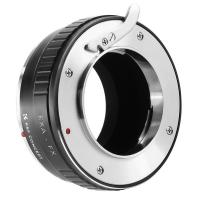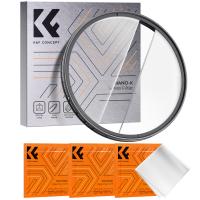What Does Wool Look Like Under A Microscope ?
Under a microscope, wool appears as a series of overlapping scales, which give it a unique crimped appearance. The scales are made of a protein called keratin, which is also found in human hair and nails. The crimped structure of wool allows it to trap air, making it an excellent insulator. The diameter of wool fibers can vary greatly, from as thin as 15 microns to as thick as 40 microns, depending on the breed of sheep and the quality of the wool. The finer the wool, the softer and more luxurious it feels. Wool fibers are also naturally elastic, which allows them to stretch and recover their shape. Overall, wool is a fascinating material with many unique properties that make it a popular choice for clothing, blankets, and other textiles.
1、 Wool fiber structure
Wool fiber structure is a complex and fascinating subject that has been studied extensively over the years. When viewed under a microscope, wool fibers appear as a series of overlapping scales or cuticles that run along the length of the fiber. These scales are responsible for the unique properties of wool, such as its ability to trap air and provide insulation.
Recent research has shed new light on the structure of wool fibers, revealing that they are not as uniform as previously thought. Instead, wool fibers can vary in thickness and shape, with some fibers appearing more flattened or twisted than others. This variability in fiber structure can have a significant impact on the properties of wool fabrics, such as their softness, durability, and ability to resist pilling.
In addition to the scales that run along the length of the fiber, wool also contains a central core or medulla. This medulla can vary in size and shape, and may be absent in some fibers altogether. The medulla is thought to play a role in the mechanical properties of wool, such as its ability to stretch and recover.
Overall, the structure of wool fibers is a complex and dynamic subject that continues to be studied and explored by scientists and textile experts alike. By understanding the structure of wool fibers at a microscopic level, we can gain a deeper appreciation for the unique properties and characteristics of this remarkable natural fiber.

2、 Scales on wool fibers
Under a microscope, wool fibers appear to have scales on their surface. These scales are known as cuticles and are made up of overlapping layers of flattened cells. The cuticles give wool its characteristic crimp and provide insulation by trapping air between the fibers.
Recent research has shown that the scales on wool fibers are not uniform in size or shape. Instead, they vary depending on the breed of sheep and the location on the animal where the wool was harvested. This variation in scale structure can affect the properties of the wool, such as its softness, strength, and ability to resist water.
In addition to the scales, wool fibers also contain a protein called keratin, which gives them their strength and elasticity. The keratin molecules are arranged in a helical structure, which allows the fibers to stretch and recover their shape.
Overall, the microscopic structure of wool fibers is complex and varies depending on a number of factors. Understanding these structures can help us to develop new ways of processing and using wool, as well as improving our understanding of the properties of natural fibers.

3、 Crimp in wool fibers
Under a microscope, wool fibers appear to have a scaly surface, which gives them their characteristic crimp. The crimp in wool fibers is caused by the way the fibers grow in the sheep's skin. The fibers are not straight, but rather they grow in a wavy pattern, which creates the crimp. This crimp is important because it gives wool its unique properties, such as elasticity, resilience, and the ability to trap air, which makes it an excellent insulator.
Recent research has shown that the crimp in wool fibers is not just a physical characteristic, but it is also related to the chemical composition of the fiber. The crimp is caused by the presence of a protein called keratin, which is the main component of wool fibers. Keratin has a unique structure that allows it to form the wavy pattern that creates the crimp.
In addition to the crimp, wool fibers also have a natural luster and a range of colors, from white to black and everything in between. The diameter of wool fibers can vary greatly, from as fine as 10 microns to as thick as 40 microns, which affects the texture and feel of the wool.
Overall, wool fibers are a complex and fascinating material that have been used for thousands of years for their unique properties and versatility. Understanding the structure and composition of wool fibers can help us appreciate and utilize this amazing natural resource in new and innovative ways.

4、 Wool fiber diameter
Wool is a natural fiber that comes from the fleece of sheep. When viewed under a microscope, wool fibers appear to be scaly and irregular in shape. The scales on the surface of the fiber are known as cuticles, and they give wool its characteristic crimp and elasticity. The diameter of wool fibers can vary depending on the breed of sheep, but typically ranges from 20 to 40 microns.
Recent research has shown that the diameter of wool fibers can have a significant impact on the properties of wool fabrics. For example, finer wool fibers are generally softer and more comfortable to wear, while coarser fibers are more durable and resistant to wear and tear. In addition, the diameter of wool fibers can affect the insulating properties of wool fabrics, with finer fibers providing better insulation than coarser fibers.
Overall, wool is a versatile and durable fiber that has been used for centuries to make a wide range of clothing and textiles. Whether viewed under a microscope or worn as a cozy sweater, wool remains a popular choice for its natural warmth, comfort, and durability.







































